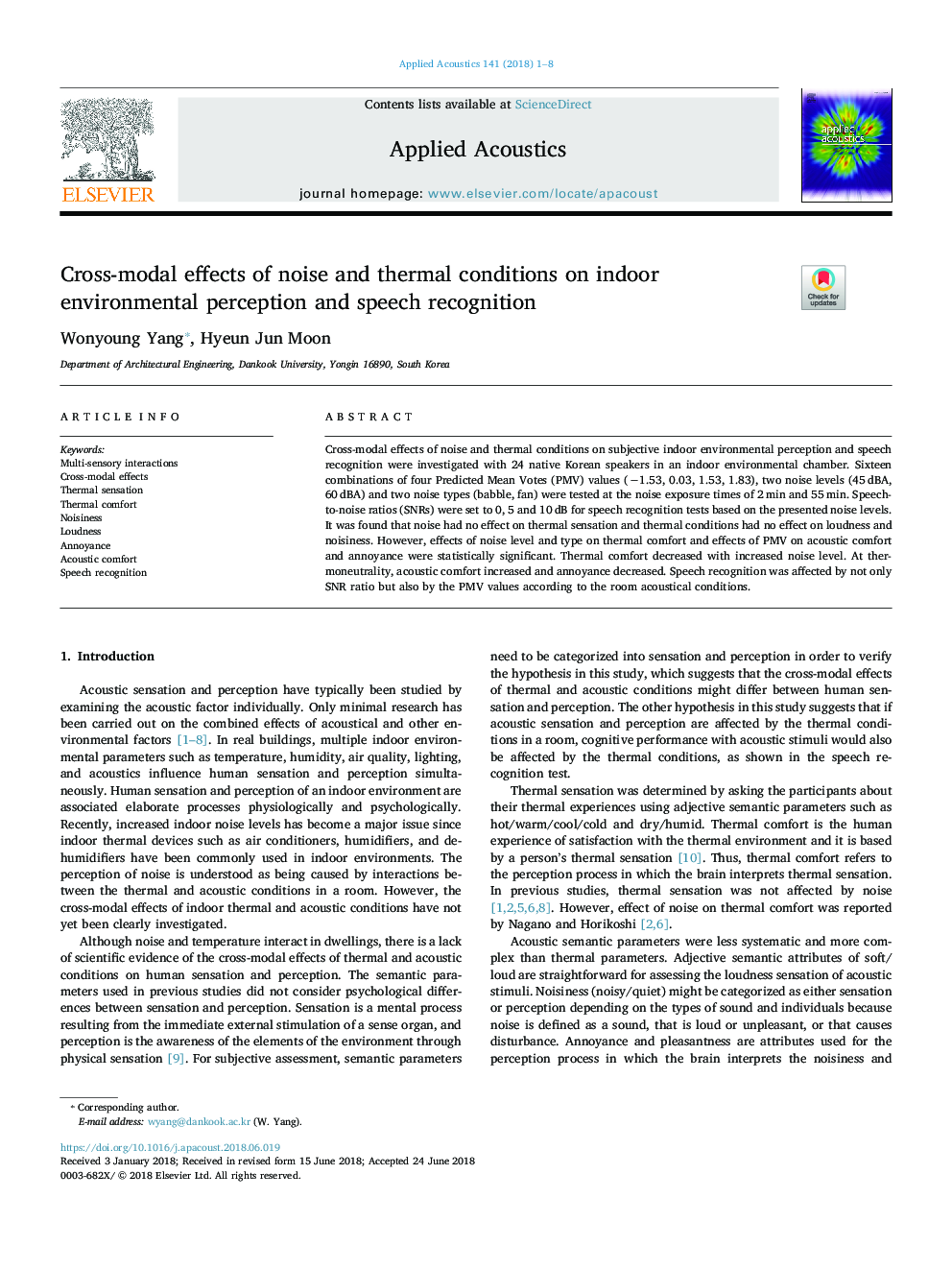| Article ID | Journal | Published Year | Pages | File Type |
|---|---|---|---|---|
| 7151983 | Applied Acoustics | 2018 | 8 Pages |
Abstract
Cross-modal effects of noise and thermal conditions on subjective indoor environmental perception and speech recognition were investigated with 24 native Korean speakers in an indoor environmental chamber. Sixteen combinations of four Predicted Mean Votes (PMV) values (â1.53, 0.03, 1.53, 1.83), two noise levels (45â¯dBA, 60â¯dBA) and two noise types (babble, fan) were tested at the noise exposure times of 2â¯min and 55â¯min. Speech-to-noise ratios (SNRs) were set to 0, 5 and 10â¯dB for speech recognition tests based on the presented noise levels. It was found that noise had no effect on thermal sensation and thermal conditions had no effect on loudness and noisiness. However, effects of noise level and type on thermal comfort and effects of PMV on acoustic comfort and annoyance were statistically significant. Thermal comfort decreased with increased noise level. At thermoneutrality, acoustic comfort increased and annoyance decreased. Speech recognition was affected by not only SNR ratio but also by the PMV values according to the room acoustical conditions.
Related Topics
Physical Sciences and Engineering
Engineering
Mechanical Engineering
Authors
Wonyoung Yang, Hyeun Jun Moon,
